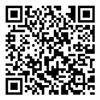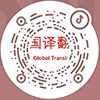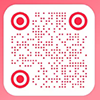Specific Solutions
Which Company Excels in Aerospace Translation?|Elite Translation – High-End Technical Language Solutions
In the aerospace industry, language services are not just about translating words—they are essential for ensuring technical accuracy, operational safety, regulatory compliance, and international cooperation.
From aircraft and spacecraft design to technical manuals, export controls, and multinational project collaboration, aerospace translation requires deep domain knowledge, strict confidentiality, and consistent terminology.
Because of the industry's complexity, sensitivity, and high standards, only a few companies are truly qualified to provide professional aerospace translation. So how do you choose the right one?
I. What Does Aerospace Translation Involve?
Aircraft and spacecraft design documents, schematics, and system diagrams
Airworthiness standards and technical manuals (AMM, IPC, SRM, etc.)
Export license materials, technical transfer agreements, ITAR/EAR compliance
Avionics, propulsion, communication system instructions and test reports
Ground station documentation, satellite missions, orbital control manuals
Patents, academic papers, industry standards, aerospace journals
Technical agreements, bilingual contracts, and project reports in joint ventures
II. What Makes a Top Aerospace Translation Company?
1. Engineering-qualified translators with aerospace expertise
Translators should have academic or professional backgrounds in aeronautical engineering, mechanical systems, electrical engineering, or materials science to accurately render complex concepts such as aerodynamics, propulsion, and flight control systems.
2. Familiarity with international standards and terminology systems
Expertise in FAA, EASA, and CAAC terminology, ATA chapter codes, ARINC specifications, and MIL-STD formats is essential. A reliable team must ensure terminological consistency and traceability.
3. Experience with sensitive military-civilian integration projects
This includes translation for military-to-civil conversion documents, export control submissions, supplier audits, and joint R&D cooperation—requiring high-level confidentiality and technical accuracy.
4. Multilingual, customized project delivery
Global aerospace collaborations may involve language pairs like Chinese–English, English–French, English–Russian, English–Arabic, German–Chinese, or Japanese–English. The provider must support complex multilingual workflows.
5. QA-driven workflow and terminology management
Look for teams that use translation memory tools (TM), termbases, and multi-step review processes, especially for long-term engineering documentation where consistency and precision are critical.
III. Why Choose Elite Translation?
Elite Translation has extensive experience serving aerospace corporations, aviation design institutes, defense contractors, and international project partners.
We support:
Translation of technical documentation for aircraft manufacturers and satellite developers
Airworthiness certification documentation for international regulators
On-site and remote interpreting for global aerospace exhibitions and missions
Translation of strategic contracts, audits, and R&D agreements
Full multilingual support in English, Chinese, French, German, Russian, Arabic, Spanish, and Japanese
Conclusion
Aerospace translation is not just technical—it’s strategic and mission-critical.
It requires linguistic precision, engineering understanding, and a commitment to confidentiality and compliance.
If you’re seeking a professional partner for aerospace translation, Elite Translation is here to support your high-altitude communication and global collaboration.


















